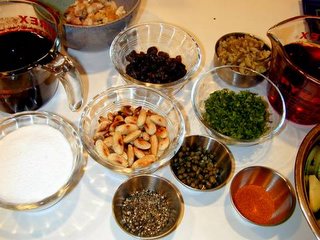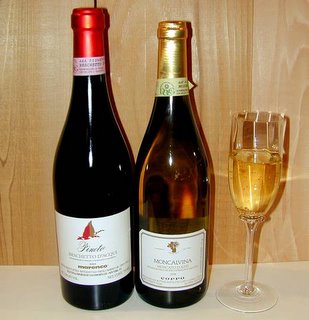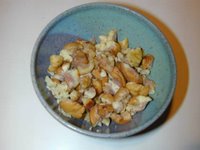
Mise En Place
Many beginning or occasional cooks are intimidated by long lists of ingredients. First, they have to collect ingredients that they may not have immediately available, but second, they have to prepare them all. That prep work stops people even if the ingredients are common items such as onions, garlic, carrots and parsley. Why? Too many people try to do the prep while cooking. They start down the recipe step by step, working to gather and chop ingredients as they reach them. Needless to say, this approach is less than efficient, but it is also the cause of much stress and overcooking. It is tempting to think that during the 10 minutes that your onions and garlic are browning leaves you with enough time to cut up your chicken into bite size pieces, or that you can easily find and grab the paprika just when you need it. But, even the best laid plans often go awry, and suddenly your onions scorch while you are trying to avoid losing fingers as you chop at high speed. How do you avoid this situation? Copy restaurant chefs; use a mise en place.
Mise en place is the French term for advance prep when cooking. Here, it commonly refers to the chef’s set-up of all the pre-measured and prepared ingredients needed for that night’s meal service. Planning and preparing all the ingredients in advance is not only more efficient, it allows you to focus entirely on the actual cooking of the meal you are making. On the efficiency side, you may have two or three dishes that share a common ingredient (perhaps onion or parsley). It is much faster to measure and chop enough for all the dishes than to repeat the process each time you need it. Also, having everything at hand enables you to add ingredients at the perfect time. It is no problem if something cooked faster than expected; the ingredients for the next step are ready to go.
The picture above shows part of my mise en place for Pollo al Vin Cotto (Chicken with “Cooked Wine”) from Molto Italiano by Mario Batali along with its supporting dishes (including homemade Fettucine with Lemon). It is nowhere near as complicated as it looks. Over the years, I’ve assembled quite a collection of glass and metal bowls for storing ingredients. I bought a dozen or so of the little metal cups you see in seafood restaurants for holding the dipping butter that accompanies boiled lobster. They are incredibly cheap and are perfect for holding spices or a few tablespoons of chopped flavorings. I collect, prepare and measure all the ingredients for all of the recipes I’m preparing before I do any cooking. Each ends up in the appropriate sized dish. If a group of ingredients are going to be added at the same time, I mix them together. My whole collection sits within easy reach of the stove as I start to cook. It’s easy and fast!
If you don’t already do so, try using a mise en place the next time you cook. I guarantee that once you are used to it, you’ll be faster, your dishes will come out better and you’ll enjoy cooking more. As a final bonus, if you have guests that like to watch you cook, the mise en place lets you entertain and cook at the same time without worrying about chopping a finger when you are distracted!




